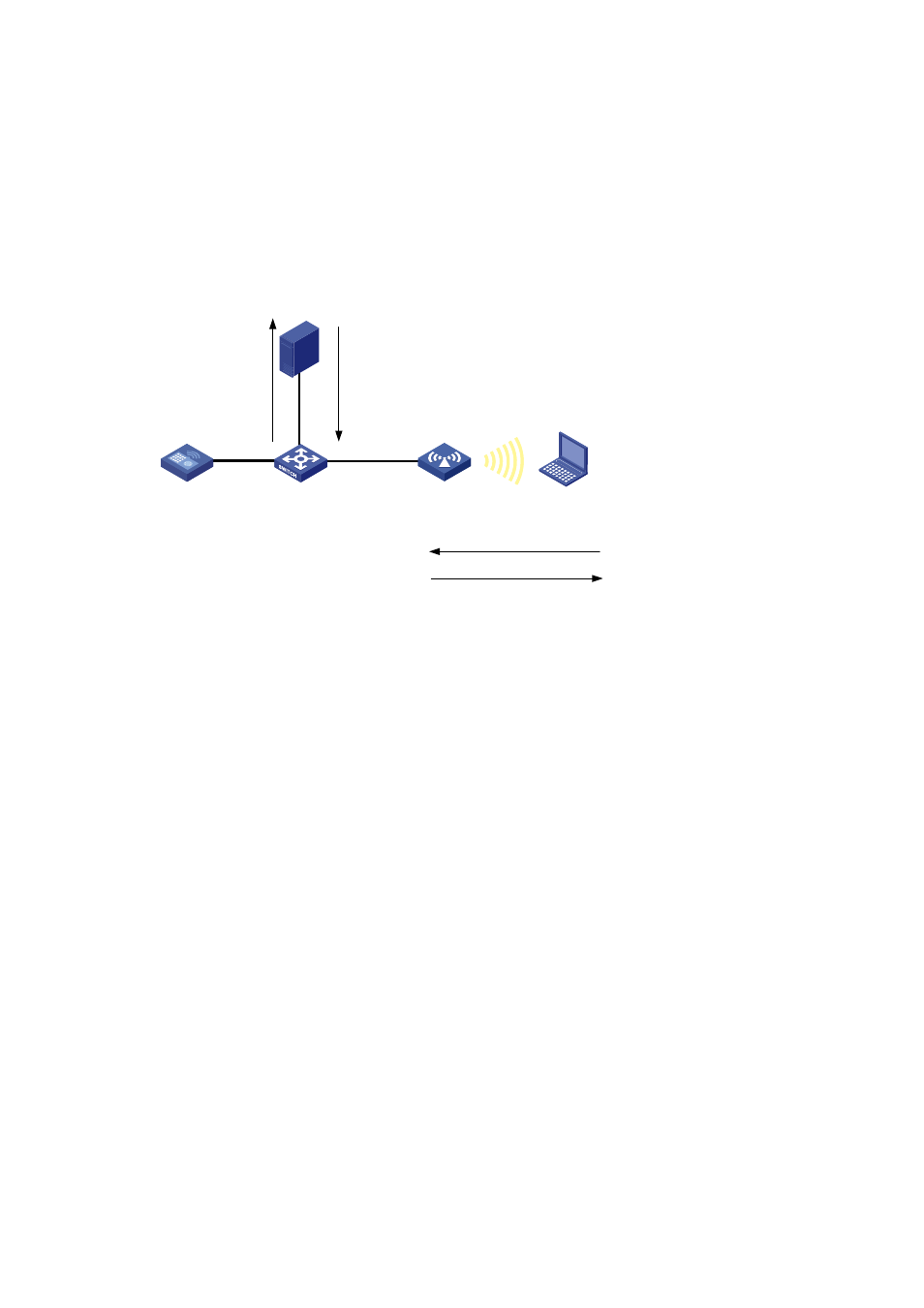H3C Technologies H3C WX6000 Series Access Controllers User Manual
Page 262

31-8
Remote Authentication Dial-In User Service (RADIUS) based MAC authentication: When
RADIUS-based MAC authentication is used, the device operates as the RADIUS client, and
cooperates with a RADIUS server to perform MAC authentication on unknown clients. Clients
passing authentication can access the wireless network and get authorization information from the
RADIUS server.
Figure 31-8 RADIUS-based MAC authentication
AC
L2 switch
AP
Client
RADIUS server
A permitted MAC address list has been
configured on the RADIUS server
1. Association request
2. Association response
0009-5bcf-cce3
3. The L2 switch sends
the MAC address of the
client to the RADIUS
server
4. After checking the MAC
address, if the client passes
the authentication, the
RADIUS server sends a
RADIUS-ACCEPT
You can specify a domain for each wireless service, and thus MAC authentication information of
different SSIDs is sent to different remote RADIUS servers.
802.11n
As the next generation wireless LAN technology, 802.11n supports both 2.4GHz and 5GHz bands. It
provides higher-speed services to customers by using the following two methods:
1) Increasing bandwidth: 802.11n can bond two adjacent 20-MHz channels together to form a
40-MHz channel. During data forwarding, the two 20-MHz channels can work separately with one
acting as the primary channel and the other acting as the secondary channel or work together as a
40-MHz channel. This provides a simple way of doubling the data rate.
2) Improving channel utilization through the following ways:
A-MPDU frame: By aggregating multiple message protocol data units (MPDUs) and using only one
PHY header for the aggregate MPDUs (A-MPDU), the overhead in transmission and the number of
ACK frames to be used are reduced, which thus improves channel utilization.
A-MSDU: Multiple MAC service data units (MSDU) can be aggregated into a single A-MSDU. This
reduces the MAC header overhead and thus improves MAC layer forwarding efficiency and
channel utilization.
Short GI function at the physical layer: This feature shortens the guard interval (GI) of 800 us in
802.11a/g to 400 us, thus effectively reducing the channel idle time, and improving channel
utilization. The short GI feature can increase the performance by about 10 percent.
